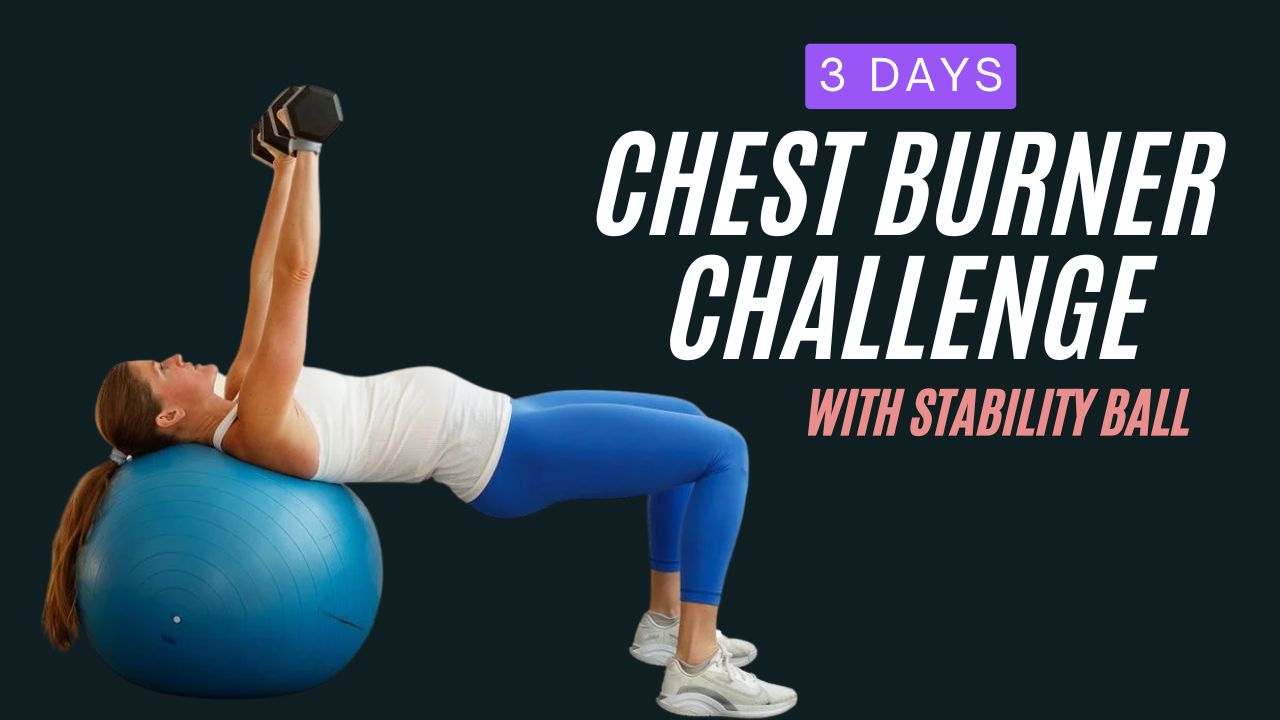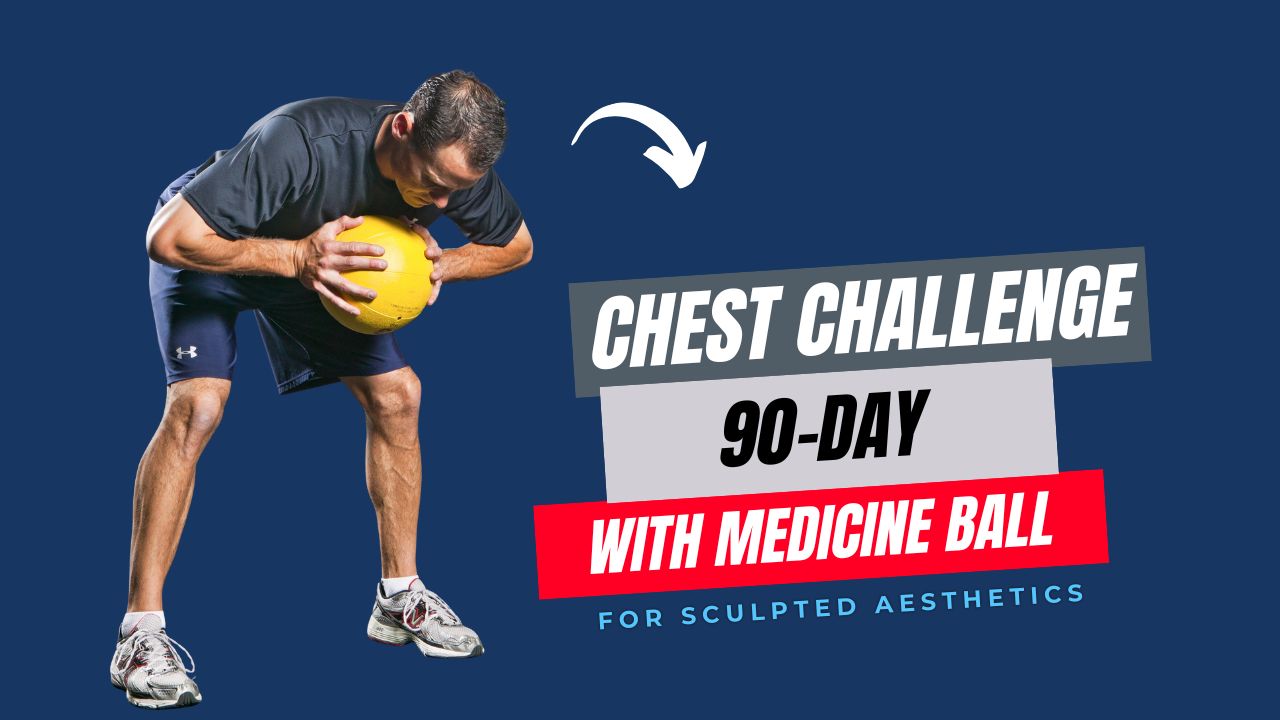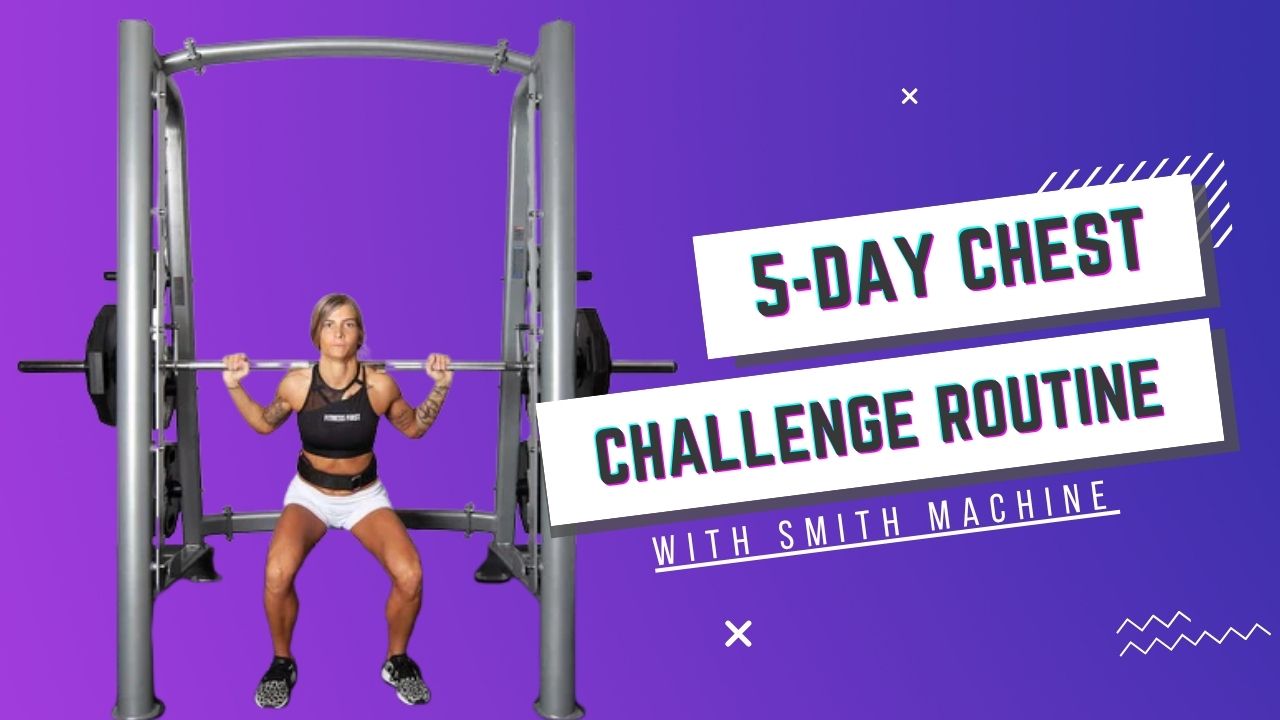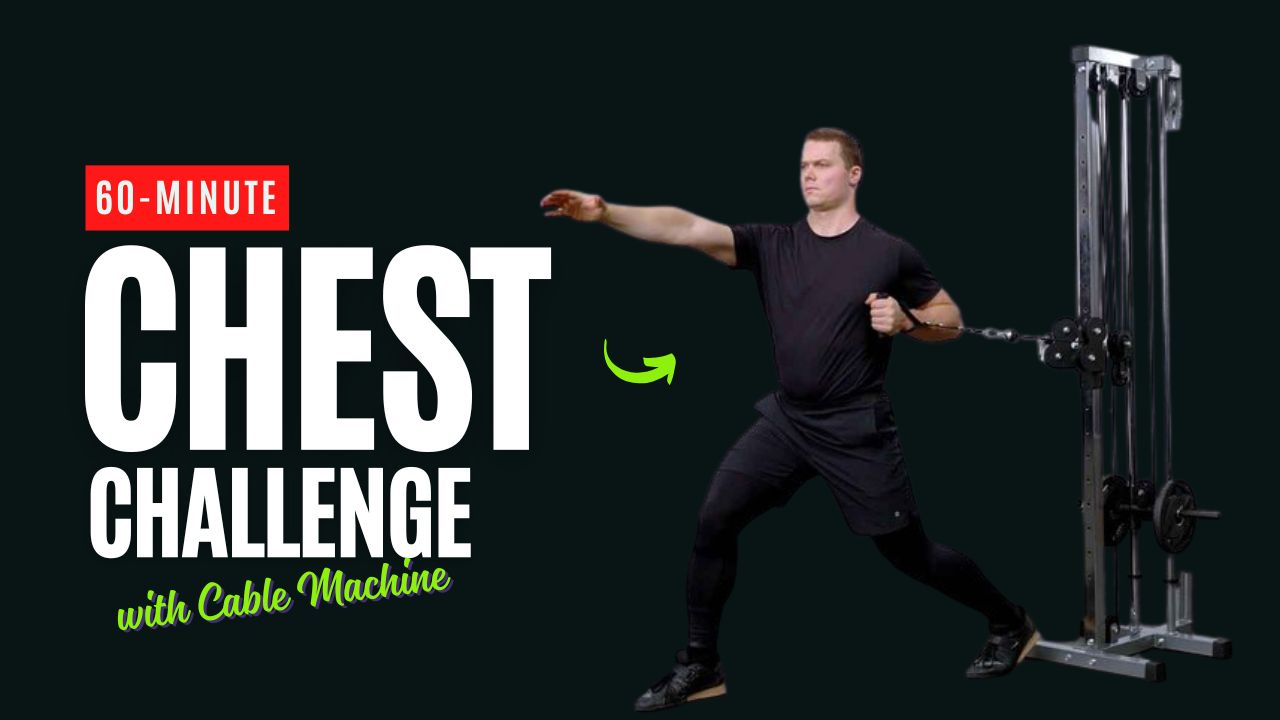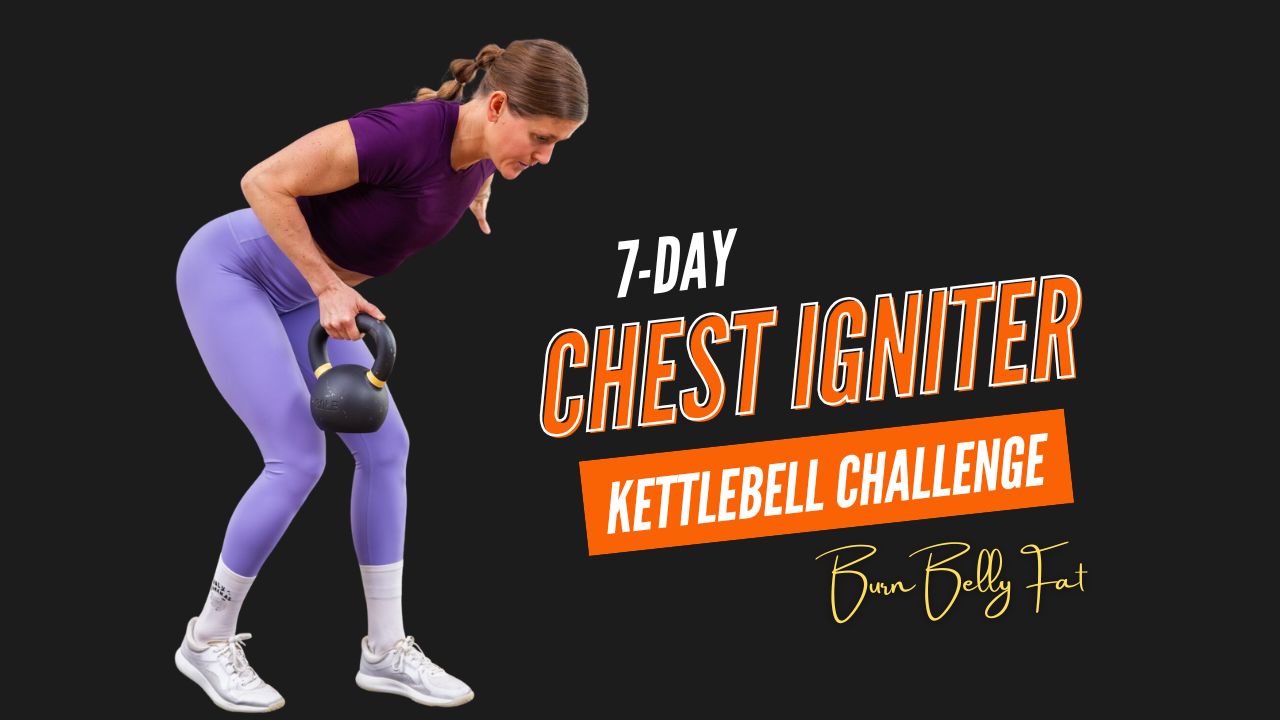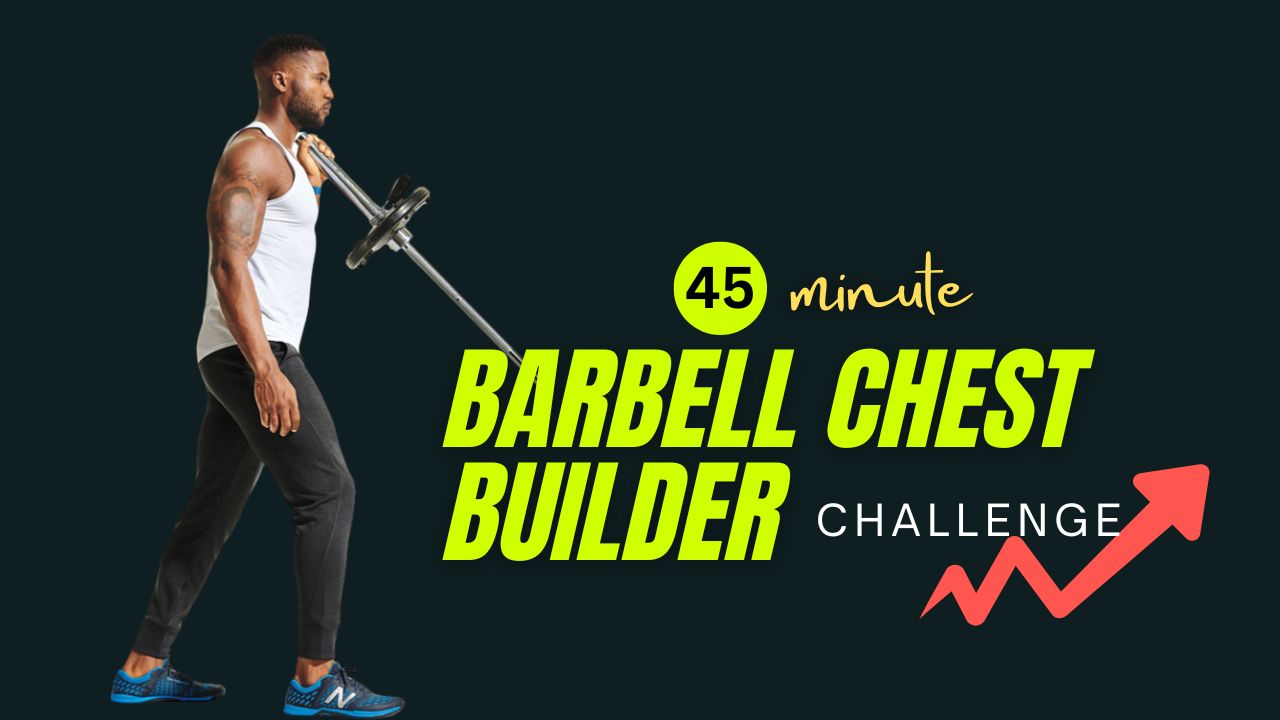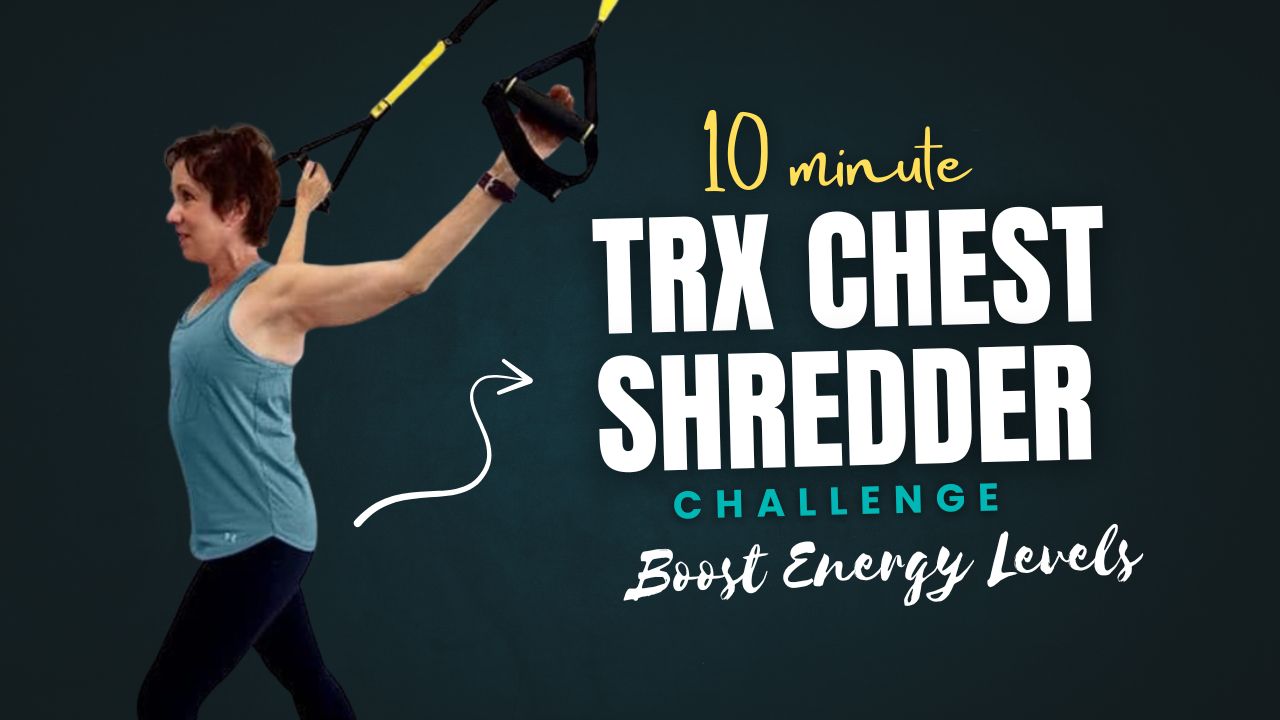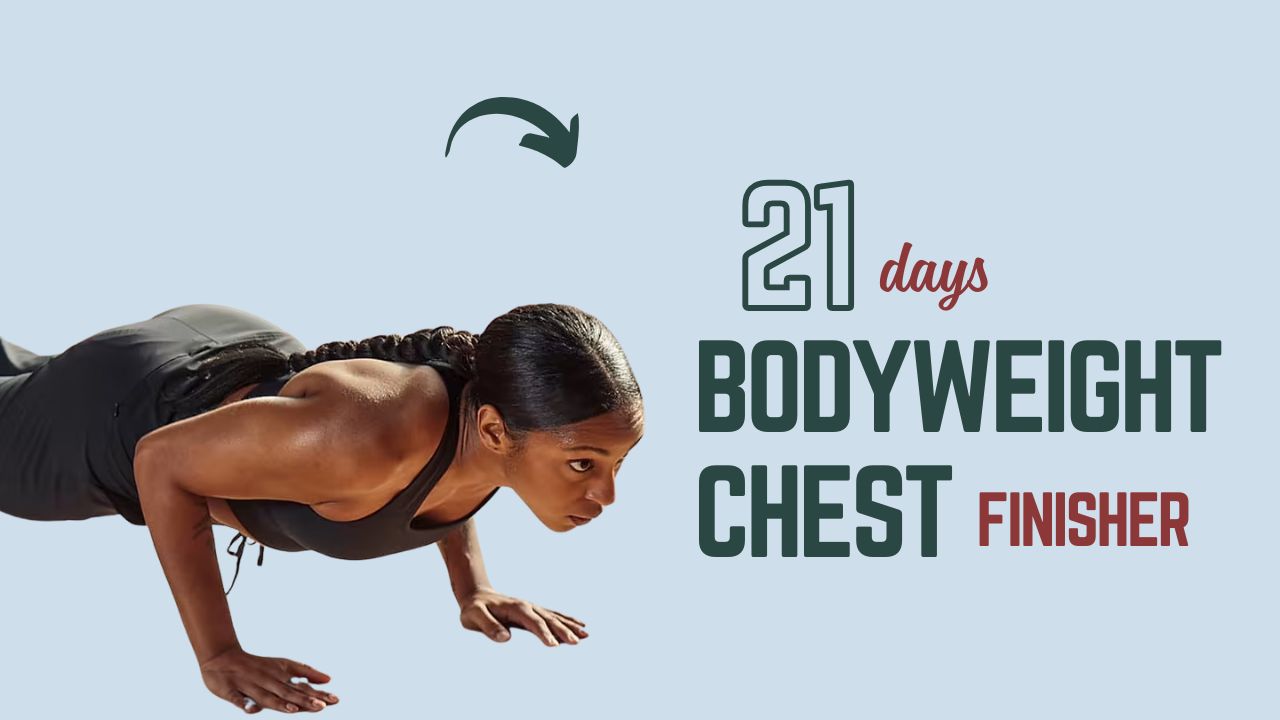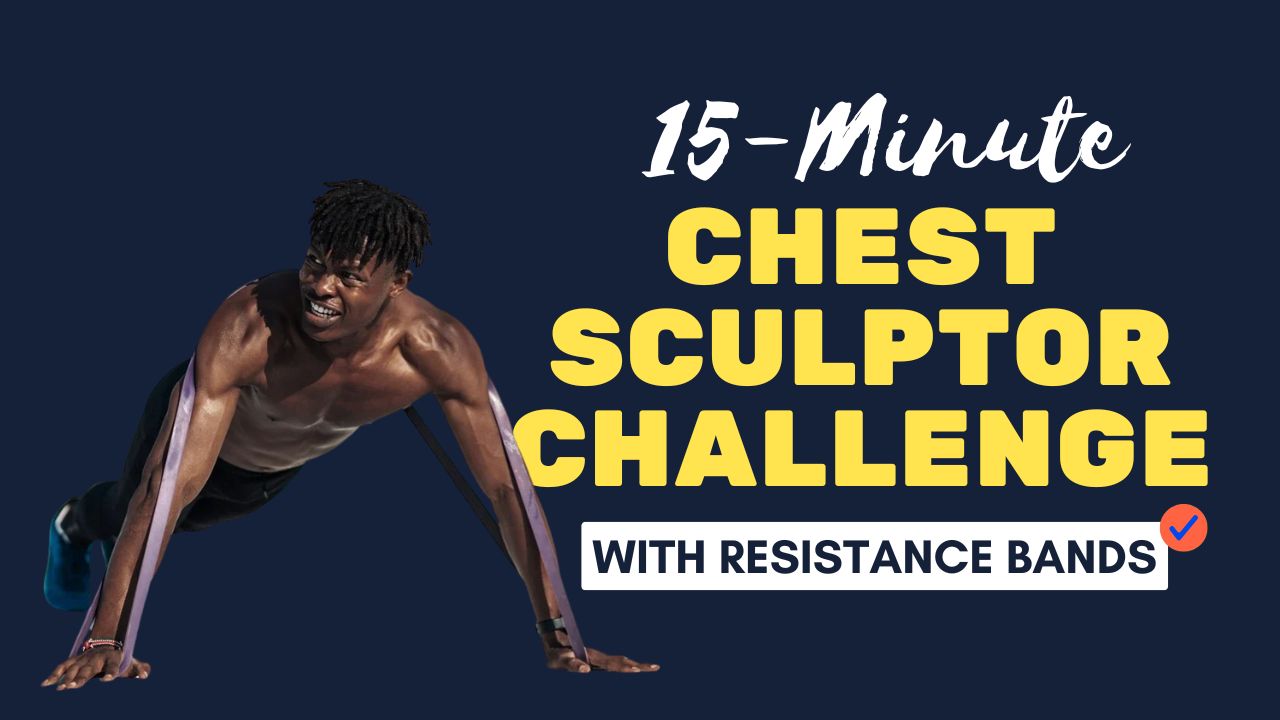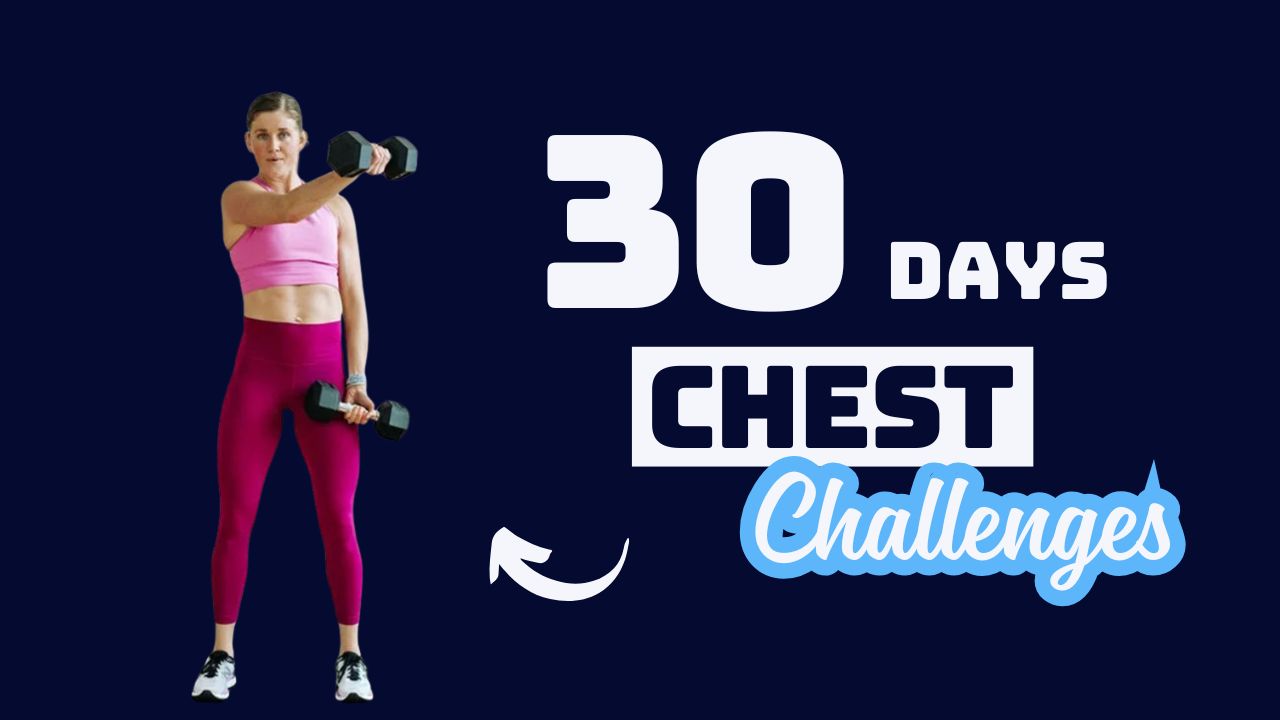If you think chest training is all about bench presses and push-ups, think again. The medicine ball—often overlooked in gyms—can be your secret weapon for building a sculpted, powerful, and aesthetically balanced chest.
Over the next 90 days, this challenge will not only carve definition into your pecs but also improve explosive strength, coordination, and core stability—qualities that traditional chest workouts often neglect.
Here’s the catch: you don’t need a full gym setup. One medicine ball, some floor space, and your determination are enough to transform your upper body.
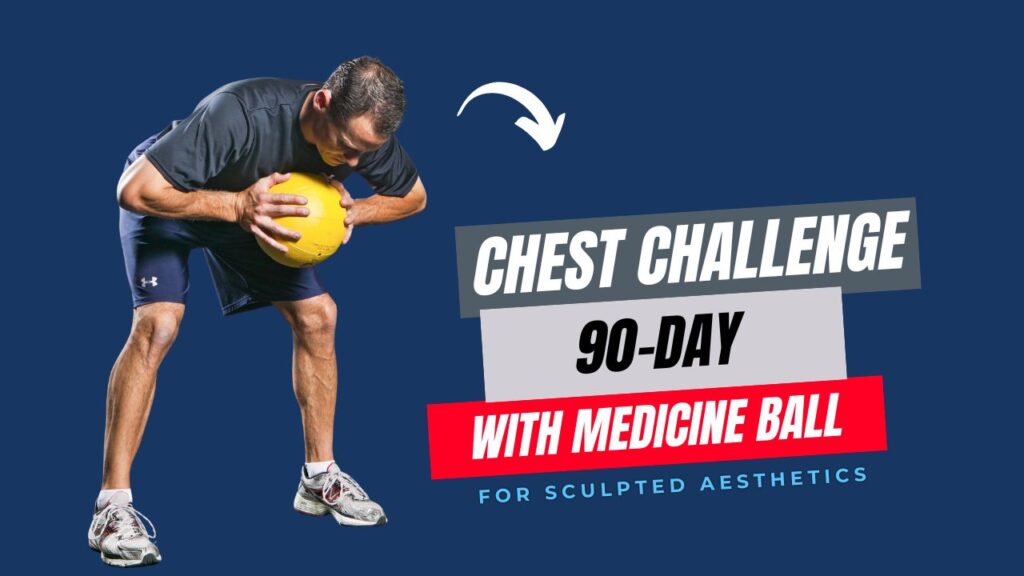
Table of Contents
Why a Medicine Ball for Chest Training?
The medicine ball is more than just a weighted sphere—it’s a functional training tool that activates stabilizer muscles, improves range of motion, and builds dynamic strength. Unlike fixed-path machines, medicine ball training demands balance, coordination, and core engagement—essential for real-world strength and sports performance.
Key Benefits for the Chest:
- Builds explosive pushing power for sports and daily activities.
- Engages secondary muscle groups like shoulders, triceps, and core.
- Improves functional strength by training movement patterns, not just muscles.
- Enhances muscle symmetry for a balanced look.
What Can Happen After 30 Days of the 90-Day Medicine Ball Chest Challenge
| Positive Changes You May Notice | If You’re Inconsistent or Use Poor Form |
|---|---|
| Increased chest muscle activation and better mind-muscle connection. | Minimal or no visible muscle changes. |
| Improved push-up strength and endurance. | Plateau in strength gains due to lack of progressive overload. |
| Enhanced core stability from balancing on the medicine ball. | Persistent poor balance and weak stabilizer muscles. |
| Better upper body coordination and explosive power. | Higher risk of shoulder or wrist strain from incorrect technique. |
| Slight visual changes in chest definition and shape. | No noticeable aesthetic improvements. |
| More confidence in performing functional, athletic movements. | Frustration from slow progress and loss of motivation. |
| Greater range of motion and flexibility in the chest and shoulders. | Continued tightness or stiffness in upper body muscles. |
Do’s and Don’ts for the 90-Day Medicine Ball Chest Challenge
| Do’s | Don’ts |
|---|---|
| Warm up your chest, shoulders, and arms for at least 5–7 minutes before starting. | Skip warm-ups and jump directly into intense exercises. |
| Focus on proper form and controlled movements over speed. | Use momentum or rush through reps, which reduces effectiveness and increases injury risk. |
| Choose a medicine ball weight that challenges you without compromising technique. | Select a ball that’s too heavy, causing poor form or strain. |
| Maintain a neutral spine and engage your core during every exercise. | Let your lower back sag or hips drop in push-up variations. |
| Follow the progressive overload principle—gradually increase reps, sets, or weight. | Stick to the same reps and weight for all 90 days without progression. |
| Rest 48 hours between chest sessions for optimal muscle recovery. | Train your chest every day without allowing for rest. |
| Hydrate well before, during, and after workouts. | Ignore your hydration, which can affect performance and recovery. |
| Modify exercises if you experience discomfort, especially in the shoulders. | Push through sharp pain, which can lead to injury. |
| Pair this routine with balanced nutrition and adequate protein intake. | Rely solely on workouts without supporting your body through proper diet. |
| Stretch your chest and shoulders post-workout to aid flexibility and recovery. | Skip cool-down stretches, leading to stiffness and reduced mobility. |
The 90-Day Medicine Ball Chest Exercises
Below is a carefully designed list of medicine ball chest exercises. Each includes:
- Description (what it targets and why it’s effective)
- How To (step-by-step execution)
1. Medicine Ball Push-Up
Description:
A twist on the classic push-up, this variation elevates one hand on a medicine ball, creating instability that forces your chest and core to work harder.
How To:
- Place your right hand on the medicine ball, left hand on the floor, both hands shoulder-width apart.
- Keep your body in a straight plank position.
- Lower your chest towards the floor, keeping your elbows close to your body.
- Push back up to starting position.
- Switch sides after your set to balance muscle activation.
Tip: Keep your core tight to avoid hip sag.
2. Medicine Ball Chest Pass
Description:
This explosive throw targets fast-twitch muscle fibers in your chest and triceps, perfect for building power and speed.
How To:
- Stand facing a wall (or with a partner) holding the ball at chest height.
- Bend knees slightly, engage your core.
- Explosively push the ball forward from your chest, releasing it with both hands.
- Catch it on the rebound and immediately repeat.
Fact: This mimics the motion of a sports pass, enhancing athletic performance.
3. Medicine Ball Squeeze Press
Description:
By pressing the ball between your palms, you engage the inner chest fibers more effectively than with traditional bench presses.
How To:
- Lie on your back with knees bent and feet flat.
- Hold the ball between your palms, arms extended above your chest.
- Squeeze the ball hard as you slowly lower it to your chest.
- Press it back up while maintaining the squeeze.
Myth Busted:
Many believe only cable crossovers hit the inner chest—squeeze-based moves like this are equally effective.
4. Medicine Ball Push Throw
Description:
An explosive floor-to-overhead push that builds upper-body speed, coordination, and chest power.
How To:
- Stand with feet shoulder-width apart, holding the ball at your chest.
- Bend knees slightly.
- Explosively push the ball upward and forward, releasing it overhead.
- Retrieve the ball quickly and repeat.
Tip: Perfect for athletes in basketball, volleyball, or combat sports.
5. Medicine Ball Incline Push-Up
Description:
By placing both hands on the medicine ball, you increase the range of motion, hitting the lower portion of the chest more effectively.
How To:
- Place both hands on top of the medicine ball, arms straight, body in plank position.
- Lower your chest towards the ball, elbows pointing out slightly.
- Push back up to starting position.
Did you know?
Incline push-ups reduce shoulder strain while still activating the pectorals effectively.
6. Medicine Ball Rolling Push-Up
Description:
Combines stability work and unilateral strength by rolling the ball between hands during push-ups.
How To:
- Start in push-up position with one hand on the ball, one on the floor.
- Perform a push-up, then roll the ball to the opposite hand.
- Repeat on the other side.
Benefit: Improves coordination between arms and strengthens stabilizers.
7. Medicine Ball Floor Press
Description:
A controlled, lying-down press that focuses purely on chest muscle contraction without lower body involvement.
How To:
- Lie on your back with knees bent, feet flat.
- Hold the ball at your chest.
- Press it straight up until arms are extended.
- Lower it slowly back to your chest.
Tip: Squeeze the ball slightly during the press to activate more muscle fibers.
8. Medicine Ball Plyo Push-Up
Description:
A powerful, explosive movement that builds raw pushing strength and fast-twitch activation.
How To:
- Start in push-up position with hands on the ball.
- Lower down, then explode upward so your hands briefly leave the ball.
- Land softly and repeat.
Warning: Only attempt if you have strong push-up form.
9. Medicine Ball Wall Push-Up
Description:
A beginner-friendly option that builds foundational chest strength with less strain.
How To:
- Stand facing a wall, holding the ball against it at chest height.
- Step back slightly and place hands on the ball.
- Bend elbows to lower your chest towards the wall.
- Push back to start.
10. Medicine Ball Around-the-World Push-Up
Description:
A chest-and-core hybrid move where you circle the ball between hands after each push-up.
How To:
- Begin in push-up position with one hand on the ball.
- Perform a push-up.
- Roll or lift the ball around your body to the other hand.
- Repeat.
Fact: This builds rotational stability, essential for athletes in swinging or throwing sports.
Training Principles for This 90-Day Challenge
- Progressive Overload: Increase reps, sets, or speed every 2 weeks.
- Rest & Recovery: Allow at least 48 hours between intense chest sessions.
- Form Over Speed: Quality reps build muscle; sloppy reps risk injury.
- Combination of Strength & Power: Alternate between slow, controlled moves and explosive throws.
The 90-Day Medicine Ball Chest Challenge Routine
Frequency: 3 days per week (e.g., Monday, Wednesday, Friday)
Equipment: 1 medicine ball (weight 4–12 lbs depending on fitness level)
| Week Range | Exercise | Sets | Reps/Time | Rest Between Sets |
|---|---|---|---|---|
| Weeks 1–2 | Medicine Ball Push-Up | 3 | 10–12 | 60 sec |
| Medicine Ball Chest Pass | 3 | 12 | 60 sec | |
| Squeeze Press | 3 | 12–15 | 60 sec | |
| Weeks 3–4 | Incline Push-Up | 4 | 12–15 | 60 sec |
| Rolling Push-Up | 3 | 8–10 per side | 60 sec | |
| Floor Press | 3 | 12–15 | 60 sec | |
| Weeks 5–6 | Plyo Push-Up | 4 | 8–10 | 90 sec |
| Push Throw | 4 | 12 | 90 sec | |
| Wall Push-Up | 3 | 15–20 | 60 sec | |
| Weeks 7–8 | Around-the-World Push-Up | 4 | 6–8 per side | 90 sec |
| Chest Pass | 4 | 15 | 60 sec | |
| Incline Push-Up | 3 | 15 | 60 sec | |
| Weeks 9–10 | Rolling Push-Up | 4 | 8–10 per side | 60 sec |
| Squeeze Press | 4 | 12–15 | 60 sec | |
| Plyo Push-Up | 4 | 8 | 90 sec | |
| Weeks 11–12 | All Exercises Circuit (8 moves) | 2 | 8–12 each | 30 sec between moves |
Recovery & Nutrition Tips for Optimal Results
- Protein Intake: Aim for 1.6–2.2g protein per kg of body weight daily.
- Hydration: Proper water intake supports muscle recovery.
- Stretching: Incorporate chest and shoulder stretches post-workout.
- Sleep: 7–9 hours of quality rest is essential for muscle growth.
Did you know?
Muscle fibers grow during rest—not during training. Skipping rest days can hinder gains.
Conclusion
The 90-Day Chest Challenge with a Medicine Ball isn’t just another workout routine—it’s a complete upper-body transformation plan that blends strength, power, and functional fitness.
Over the course of three months, you’ll challenge your chest muscles from multiple angles, improve your stability, and develop explosive pushing power that carries over into sports, daily tasks, and overall aesthetics.
What makes this program stand out is its simplicity and adaptability. Whether you’re training at home or in the gym, the medicine ball provides endless variations that keep your muscles guessing and your progress moving forward.
By sticking to the routine, focusing on proper form, and allowing your body to recover, you’ll see measurable gains in size, shape, and strength.
Remember—consistency is the real magic. Pair these workouts with good nutrition, adequate sleep, and progressive overload, and your chest will not only look stronger but also perform better in every movement you make.
The next 90 days are in your hands—literally. Grab your medicine ball and start building the chest you’ve always wanted.
Frequently Asked Questions (FAQs)
Can beginners do this 90-day medicine ball chest challenge?
Yes. Beginners can start with a lighter medicine ball (4–6 lbs) and reduce the number of sets or reps. Focus on form first, then gradually increase intensity.
How heavy should my medicine ball be?
Choose a weight that allows you to complete all reps with good form but still feels challenging by the last few repetitions. For most people, 4–8 lbs for beginners and 8–12 lbs for intermediate/advanced is ideal.
Can I replace the medicine ball with a dumbbell or other equipment?
Some exercises can be adapted using dumbbells or weight plates, but the unique instability and grip of the medicine ball provide extra benefits that other equipment may not replicate.
How soon will I see results?
Visible changes can occur in as little as 4–6 weeks, depending on your diet, consistency, and starting fitness level. Strength and endurance improvements may appear even earlier.
Should I train chest every day for faster results?
No. Your chest muscles need recovery time to grow. Follow the 3-day-per-week schedule and allow at least 48 hours between chest sessions.
Do I need a partner for this challenge?
A partner is helpful for certain throws like the chest pass but not required. You can use a wall instead for solo training.
Will this challenge help with overall upper-body strength?
Absolutely. Many exercises here also engage your shoulders, triceps, and core, contributing to overall upper-body development.
Can I combine this with other workouts?
Yes, but avoid doing intense chest workouts on consecutive days. Pair this challenge with lower-body or cardio training on alternate days for a balanced program.
Is the medicine ball safe for people with shoulder issues?
If you have shoulder problems, consult a physiotherapist or doctor before starting. You may need to modify certain movements to avoid strain.
What should I do after the 90 days are over?
You can restart the program with increased ball weight, more sets, or shorter rest times. Alternatively, integrate these exercises into a broader full-body routine.
